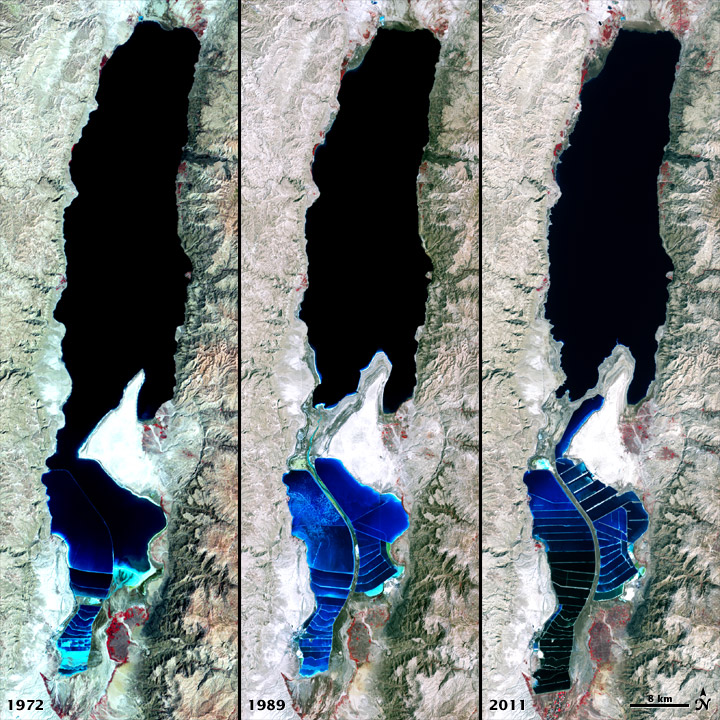

Viewers will also have access to his never-before-seen photography from the Ein Gedi and Ein Bokek waterfalls. On view until April 21, 2022, the exhibition preserves the memory of the Dead Sea’s now unrecognizable landscape and seascape captured in Tunick’s photographs from 2011, 20.

Now, as the Dead Sea is deteriorating at a rapid pace, the Dead Sea Museum, which was recently founded to bring attention to the retreating sea and dangerous sinkholes plaguing the area, presents a virtual exhibition of Tunick’s entire collection of Dead Sea works for the first time. It was aimed at building a desalination facility in Jordan and to link the Red Sea and Dead Sea.Ten years ago, American photographer Spencer Tunick enlisted 1,200 Israelis and visitors from around the globe to pose bare in and around the salty waters of Israel’s Mineral Beach, resulting in a stunning installation that not only reveals communal elements transcending class, religion and nationality, but also environmental impact. Doris girl underwater breath holding / freediving on Y-40 deep pool bottom - GoogleThisHa. Underwater girl freediving feed fish - eps 2. The increasing number of sinkholes in the water body became the subject for Mr Tunick’s second project in 2016.Īlthough there was a glimmer of hope to revive the dying sea with a $1.5-billion joint project with Palestinian authorities, Jordan this year cancelled it after a diplomatic row. Underwater girl freediving feed fish - eps 1. Environmentalists in the early 2000s predicted that the Dead Sea will disappear by 2050 if its water level continues to drop.įor Mr Spencer’s first installation, his subjects - covered with mud from the sea - posed at the Mineral Beach, located in the northern part of the Dead Sea. The Jordan river, its primary water source, has been diverted for agricultural and other uses by Israel, Jordan and Syria. In the last three decades, the sea’s water level has depleted by almost 100 feet. Triple Sinkhole Sunrise, a photo by Ilan Shacham. Fruchter tells NoCamels that bringing Tunick to Israel for one of his infamous mass nude photoshoots was an enlightening moment for him, turning him into an evangelist of the Dead Sea. The event was part of a live installation by the artist Spencer Tunick. The sea has receded by around four feet every year, creating thousands of sinkholes. An aerial perspective of Spencer Tunick’s Naked Sea project at the Dead Sea. Hundreds of people have stripped naked by the Dead Sea in Israel to draw attention to its dramatically receding shoreline. As he explained, he painted the bodies of his models white, referring to the biblical. The Dead Sea is located between Israel and Jordan. It was the third such photograph on the shores of the Dead Sea. “I am hoping this project will represent the body as an agent of change that will bring attention to the environmental problems of the Dead Sea area,” he said. "People are afraid of naked people,” Mr Tunick told the Jerusalem Post newspaper during his visit to the city last week to speak about his new project. During his first project in 2011, he featured 1,200 people, while only 15 people modelled for him in 2016. This was the 54-year-old photographer’s third nude art project on the shores of the world’s most saline water body. The project was a part of an initiative to support the establishment of the planned Dead Sea Museum in Israel’s Arad city. Mr Tunick said he chose to cover the models in white paint to evoke the Biblical story of Lot’s wife, who allegedly turned into a pillar of salt. The volunteers, both men and women, stood barefoot on brown hills overlooking the sea. Volunteers, of ages between 18 and 70, lined up across the desert near the Dead Sea in rows of 10 on Sunday and awaited instructions from the artist, who was perched on a ladder with a megaphone and a camera. Over 200 people covered only in white body paint modelled for American artist Spencer Tunick across a desert in southern Israel to raise awareness for the deteriorating condition of the Dead Sea.


 0 kommentar(er)
0 kommentar(er)
